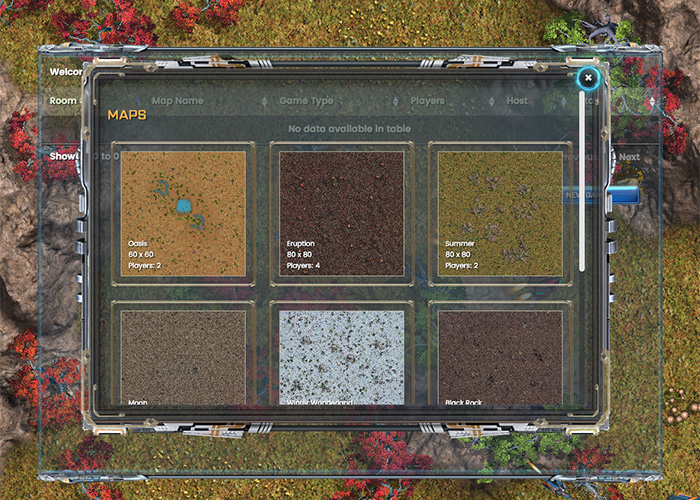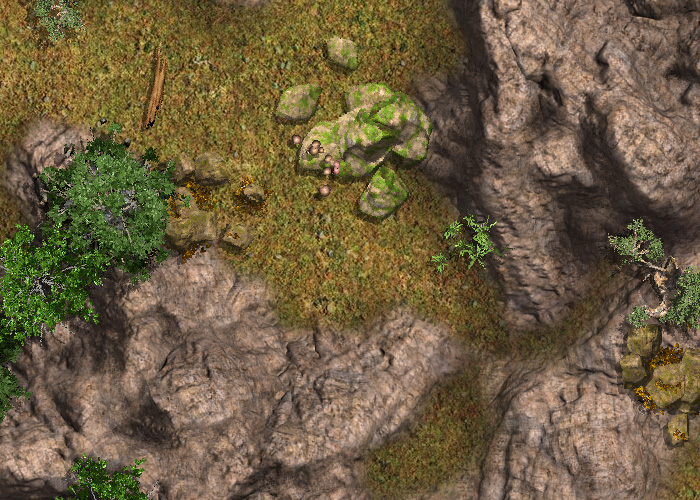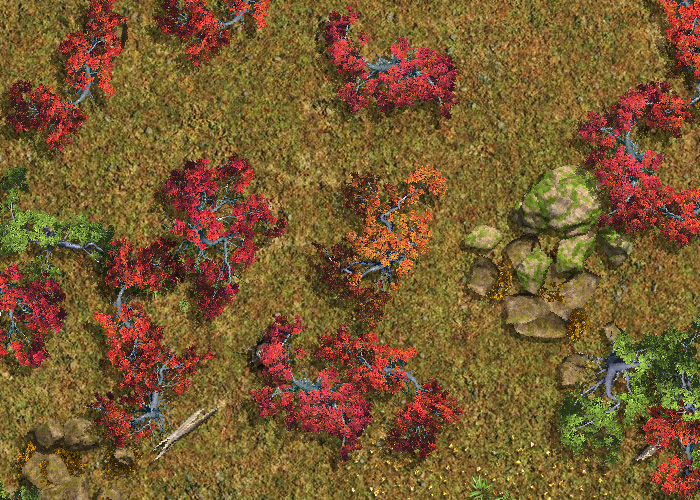Environment
January 26, 2017 — ForgeableSumThere are 3 main elements in maps that affect gameplay: size, obstruction and resource placement.
Size
The game engine is capable of rendering incredibly large maps. Maps as large as 50,000 pixels wide/high - maps that take a unit a half-hour to walk across, with very little impact on performance. My first inclination when making maps for Strike Tactics was to take advantage of this - creating maps 12K and 15K maps - but after playing against the computer on these maps, I realized that ridiculously large map sizes might severely slow down game pace, and are often impractical. For that reason, I've started to design single player maps around 6K-8K pixels and 4 player maps, 10K-12K. However, I still want to experiment with ridiculously large maps (RLMs) in the future - perhaps putting a RLM in the multiplayer rotation. After all, sheer distance is a game mechanic in itself, and something that isn't really possible with 3D realtime rendering. And they might add something cool to free-for-all, casual games.

Obstruction
Ground units are generally stronger than air units. This is because they have an inherent disadvantage: they are infinitely less mobile. A variety of map objects inhibit ground movement:
Mountains - The largest obstructions. Mountains can be placed close together in the map editor to form mountain ranges.

Trees - The only map obstructions that can be cleared by your actions in the game. When a worker finishes harvesting a tree, it disappears. I'm considering giving scorch tanks (a flamethrower unit), the ability to clear trees as well. Trees can also severely limit ground movement, especially if placed together in forests.

Water - I will likely allow hover units to travel across bodies of water, although this is not yet implemented.

Doodads - These do not take up more than 1 node size (80 x 80 pixels) and are generally there for aesthetic reasons. Traditionally, doodads do not act as movement obstructions - they do, however, in Strike Tactics.
Resource Placement
The positions of carbon (trees) and ore on a map, especially in respect to starting locations, has a profound effect on gameplay. A map can be designed with an artificial scarcity of trees or ore, which would result in different play strategies. One map might have very few trees, all in the middle of the map. Players couldn't build carbon-heavy units in the early game and, in the mid game, would need to fight for control of the center.
This is one particular gameplay element that Starcraft doesn't fully explore: resource scarcity. I felt Age of Empires 2 had the best resource system of any RTS game - the landscape of the map can completely change playstyle. It is my goal with Strike Tactics to make resource placement on the map severely effects the decisions you make in the early game.

